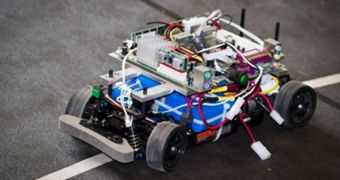Engineers at the Massachusetts Institute of Technology (MIT) announce that they are currently working on a new algorithm for controlling an intelligent transportation system that also takes into account vehicles that already circulate public roads.
There is currently no doubt that the future of car-based personal transportation lies with vehicles that can interact and communicate with each other. This type of system ensures minimal casualties due to traffic accidents and related occurrences.
Yearly, 443,000 of 110 million car accidents are fatal to drivers and passengers. Official statistics place the death toll form crashes to 110 daily, for the United States alone. This makes cars one of the leading causes of death in the country.
Companies manufacturing cars already have numerous safety protocols implemented on their latest-generation vehicles, and yet these are not enough. However, until automated cars are introduced on a large scale, something needs to be done.
When an intelligent transportation system will be available, all cars will be able to communicate with each other. In the new study, the MIT group developed an algorithm for controlling a smart car that shares the road with human-driven vehicles.
The model works by taking into account several models of human driving behavior, and using them as a basis for issuing warnings to a driver about potential collisions. If the driver is slow to react, then the car's automated systems take over, preventing potentially-fatal collisions.
MIT W. M. Keck Career Development assistant professor in biomedical engineering and assistant professor of mechanical engineering Domitilla Del Vecchio says that most important challenge for developing the algorithm is false positive results.
These are the type of results that make alarms go off all the time, even when there is nothing to be concerned about. But Del Vecchio hopes that this issue was resolved with the introduction of the models of human driving behavior.
When both cars in a collision situation will feature ITS systems, then the vehicles will be able to communicate with each other, establishing their positions, and working together to avoid collisions.
In tests conducted in the lab, using electric toy cars, the new algorithm proved to be 97 percent effective out of 100 trials. In the failed runs, the issue was a delay in communication between the ITS-equipped car and a series of sensors that picked up the position of non-ITS equipped cars.

 14 DAY TRIAL //
14 DAY TRIAL //